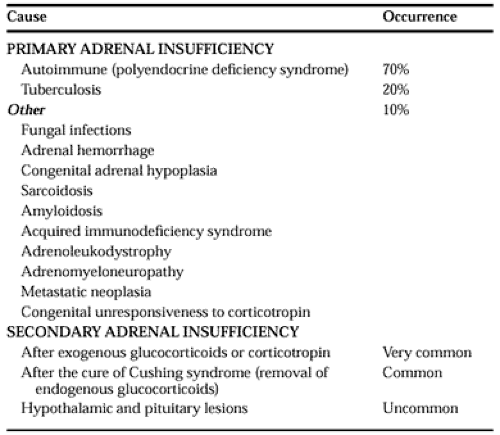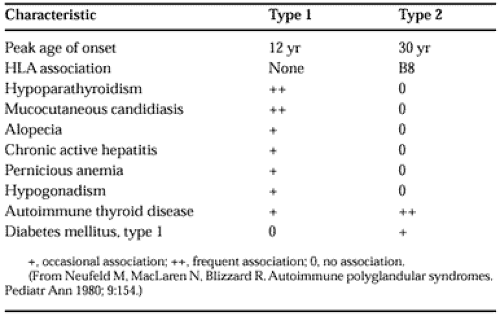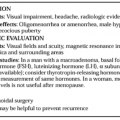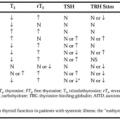PRIMARY ADRENAL INSUFFICIENCY
The two main causes of primary adrenal disease are tuberculosis and autoimmune adrenal destruction.1 The latter is a component of the polyendocrine deficiency syndrome2 (see Chap. 197). The causes of primary adrenal insufficiency are listed in Table 76-1.
Estimates are that 70% of the cases of primary adrenal insufficiency in the industrialized world are associated with the polyendocrine deficiency syndrome. This disorder is autoimmune. Findings that support this conclusion include a high prevalence of suppressor T-cell abnormalities, the presence of antibodies against endocrine organs, and an association with other disorders of known autoimmune etiology such as vitiligo, alopecia areata, celiac disease, autoimmune thyroiditis, and mucocutaneous candidiasis.3,4 The histologic picture in the adrenal glands reveals lymphocytic infiltration, fibrosis, a loss of cortical cells, and an intact adrenal medulla.
The disorder has two recognizable subtypes (Table 76-2). Type 1 is an illness of childhood, with a mean age of onset of 12 years. Adrenal insufficiency, hypoparathyroidism, and mucocutaneous candidiasis are the most common manifestations. Associated conditions include hypogonadism, pernicious anemia, chronic active hepatitis, and alopecia. The disorder has a recessive pattern of inheritance, clustering across sibships without apparent vertical transmission (see Chap. 187).
Stay updated, free articles. Join our Telegram channel

Full access? Get Clinical Tree







